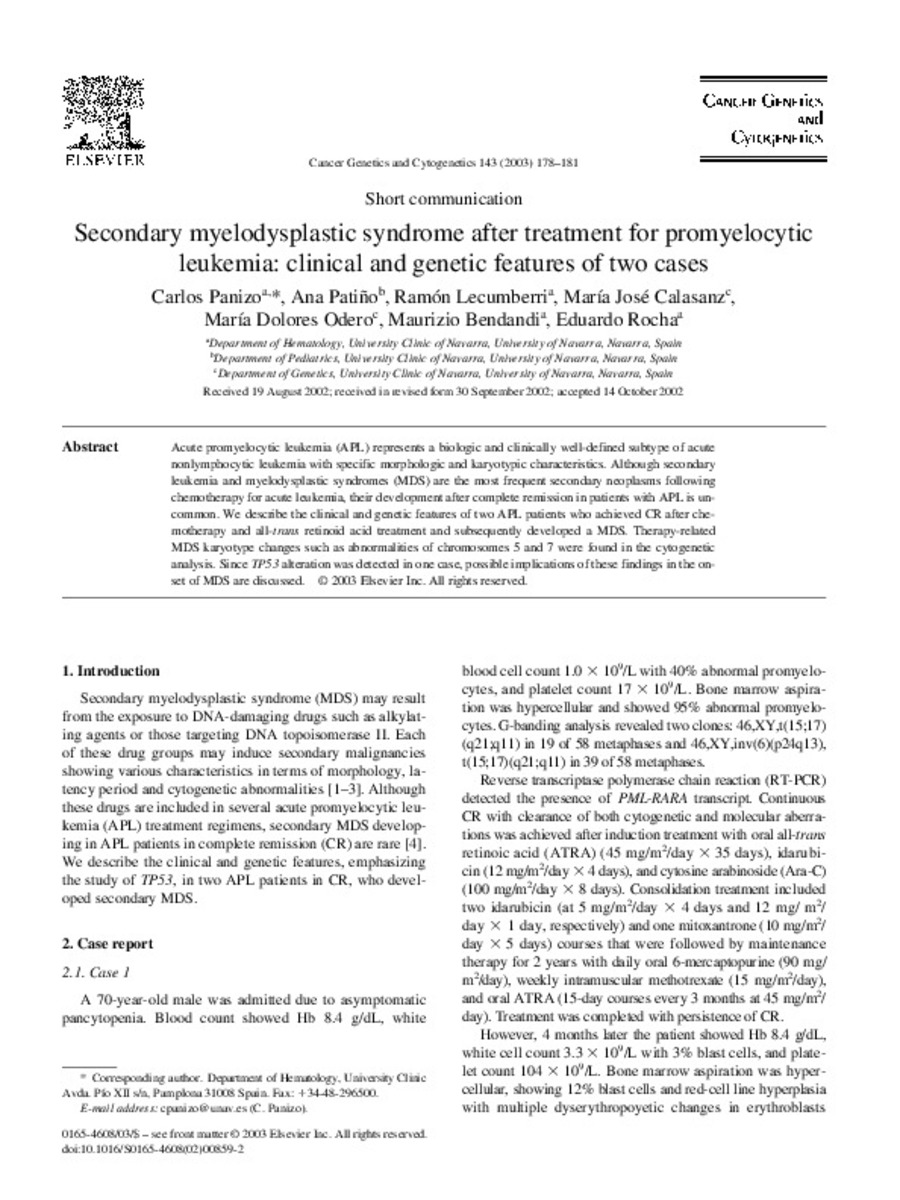Secondary myelodysplastic syndrome after treatment for promyelocytic leukemia: clinical and genetic features of two cases
Palabras clave :
Leukemia, Promyelocytic, Acute/complications/drug therapy/genetics
Myelodysplastic Syndromes/complications/genetics/pathology
Fecha de publicación :
2003
Cita:
Panizo C, Patiño A, Lecumberri R, Calasanz MJ, Odero MD, Bendandi M, et al. Secondary myelodysplastic syndrome after treatment for promyelocytic leukemia: clinical and genetic features of two cases. Cancer Genet Cytogenet 2003 Jun;143(2):178-181.
Aparece en las colecciones:
Estadísticas e impacto
0 citas en

0 citas en

Los ítems de Dadun están protegidos por copyright, con todos los derechos reservados, a menos que se indique lo contrario.









